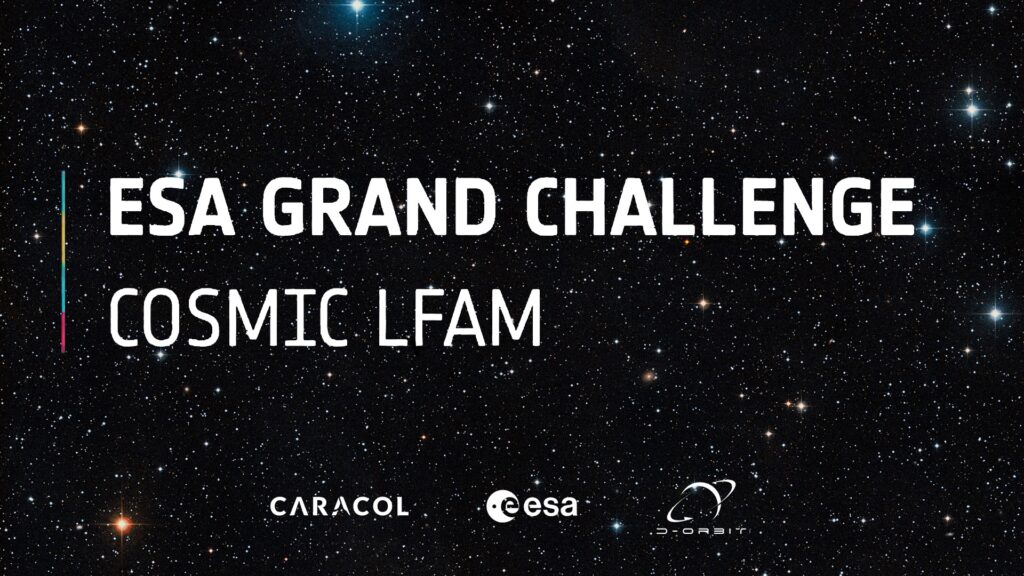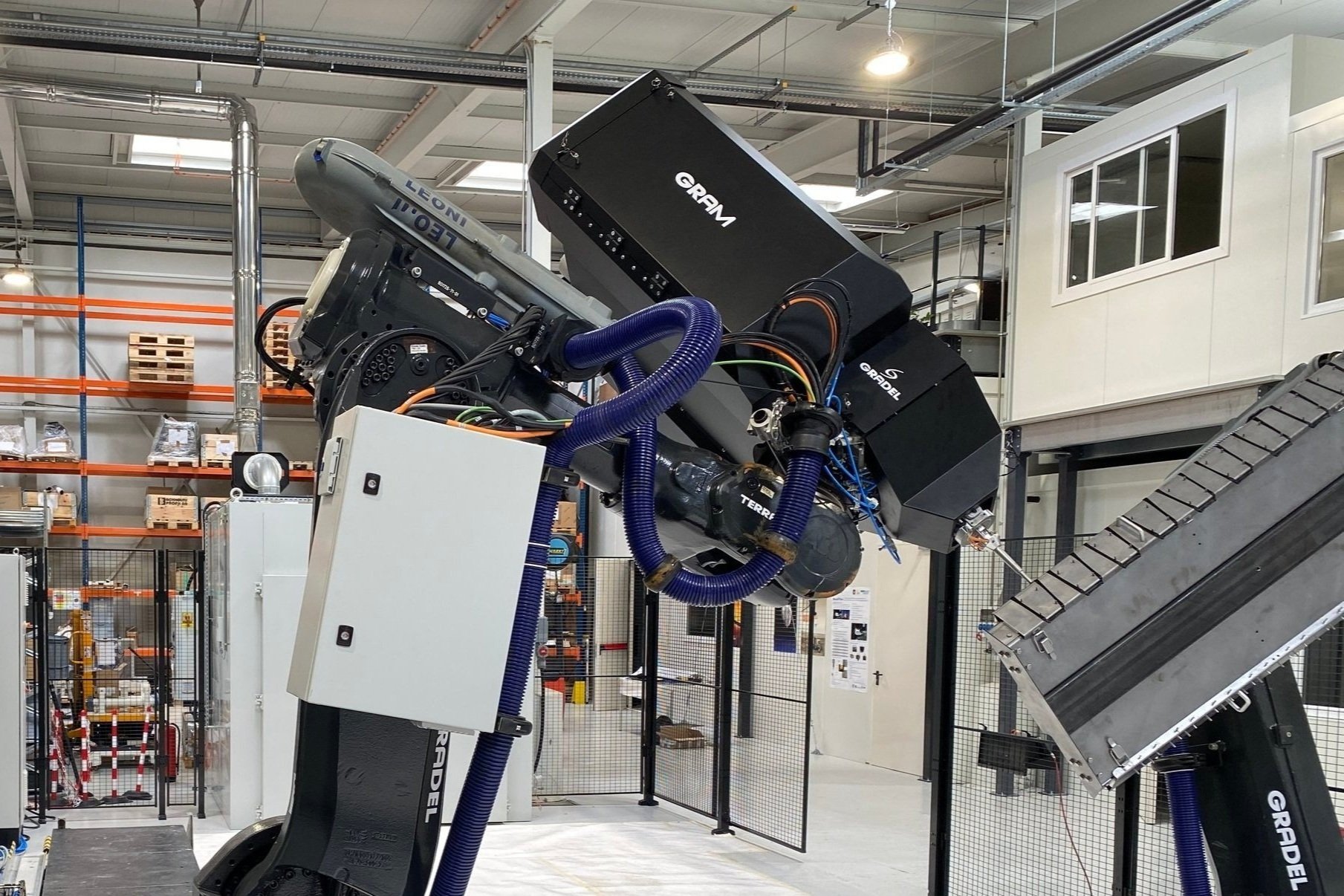In a landmark initiative for additive manufacturing (AM), the European Space Agency (ESA) has announced the winners of the COSMIC LFAM Grand Challenge. This prestigious competition, a collaboration between ESA, Caracol AM, and D-Orbit, wants to redefine the trajectory of space manufacturing. The challenge presented an opportunity for small and medium enterprises (SMEs) to team up with industry pioneers and reshape the landscape of in-orbit manufacturing, mainly through the lens of large format additive manufacturing (LFAM). With a grand prize of €100,000 at stake, the winners of this challenge are Gradel from Luxembourg, Hellenic-CAM (H-CAM) from Greece, Lodestar from the United Kingdom, and Treddy from Italy.
Kicking off its two-year timeline, the COSMIC LFAM ESA Grand Challenge now enters an important phase, with the four teams gearing up for their first primary task. According to ESA, their collective mission is to adapt Caracol LFAM technology and processes to the challenging space environment, which involves unlocking the potential for on-demand manufacturing capabilities during long-duration space missions. Entering the first phase, each team will spend the next year tackling the unique challenges of manufacturing in space. This phase is about demonstrating the potential of their technology for space applications and sharing their latest advancements with the broader community.
Gradel: Vanguard of Space Manufacturing
Among the winners is Gradel. Founded in 1965, the firm is the most seasoned of the four winners and is known for its expertise in developing specialized machinery for industries such as nuclear and space. This Luxembourg-based company boasts over 50 years of experience in automated electro-mechanical engineering and is behind the Gradel Robotic Additive Manufacturing (GRAM) process. This technology, an endless filament wet winding process, allows the creation of complex 3D structures, offering up to 70% weight savings compared to traditional methods.
The Gradel team has explained that they “started developing a groundbreaking technology to manufacture ultralightweight parts based on filament wet-winding process. Having reached TRL 6 for SPACE applications, our motivation is to set GRADEL Robotic Additive Manufacturing (GRAM) as the first-of-its-kind technology for in-space manufacturing. Relying on its unique features, GRAM has the potential to enable large-scale, lightweight manufacturing in space environment and to unlock the new possibilities for space missions, once thought to be impossible.”
With its expertise in automated electro-mechanical engineering, it remains to be seen exactly how Gradel will apply its advanced AM technology to meet the demands of the LFAM challenge.
H-CAM: 3D Printing in Southeastern Europe
Founded in 2022, H-CAM represents Greece’s thriving interest in AM. As the region’s first Center of Excellence in this field, H-CAM’s involvement in the COSMIC LFAM ESA Grand Challenge is a significant milestone.
H-CAM’s Technical Manager George Voerakos emphasized, “The Hellenic Center for Additive Manufacturing, as a unique Competence Center in 3D Printing technologies in Greece and South-Eastern Europe, is extremely happy to participate in the Cosmic LFAM – ESA Grand Challenge. We hope that our focus, determination as well and expertise will make it possible to build our way to space as we believe that the synergy between space and terrestrial applications has the potential to revolutionize manufacturing processes and open up new opportunities for technological advancements.”
H-CAM’s commitment to this challenge reflects its broader goal of modernizing the Greek economy through technological advances.
Lodestar: Disrupting Space Manufacturing
Lodestar, a UK-based start-up, brings a disruptive approach to the challenge. Its vision of developing in-orbit 3D printing technology to build the largest structures ever in space showcases ambitious goals. Founded by two off-earth manufacturing researchers, Lodestar wants to redefine how we think about material transportation to orbit. Lodestar focuses on overcoming the limitations imposed by traditional rocket launches and has plans to manufacture spacecraft structures directly in orbit.
CEO and co-founder of Lodestar, Neil Buchanan, highlighted their forward-looking vision: “Lodestar’s mission is to develop the tools for the next industrial revolution, and we’re thrilled to be selected for the COSMIC LFAM ESA Grand Challenge. It aligns perfectly with our goals – to push the boundaries of OSAM/ISAM technology that will not only enable a thriving Low-Earth-Orbit economy but also revolutionize the way we manufacture in space and on Earth. By matching our space-rated robotics to ESA, Caracol, and D-Orbit’s missions, we’re printing a better future for humanity.”
The UK-based company focuses on enhancing CubeSat capabilities by replacing traditional deployable systems with their innovative “3D printable” approach. This novel strategy aims to improve power, communication, and sensing functionalities in these small satellites. Looking further ahead, Lodestar envisions its technology’s role in constructing next-generation space stations, lunar habitats, and infrastructure for space-based solar power.
The founders of Lodestar Space are leveraging their academic research to commercialize this groundbreaking technology, attracting the attention of major players in the public, private, and defense sectors, including NASA, ESA, and the US Defense Advanced Research Projects Agency (DARPA). Also backed by Entrepreneur First, a network with notable alums like Magdrive, OpenCosmos, and Lumi Space, and part of the UK Space Agency Accelerator (UKSA) Explore accelerator, Lodestar has gained deep-tech investors from the UK to revolutionize what can be built, not just in space but also on Earth.
Treddy: Shaping the Future of AM in Italy
Treddy, an Italian company, is the only printing company in central and southern Italy to adopt the latest laser sintering 3D printing technologies. Treddy’s vision is to transform production workflows with its AM methods, aiming to replace up to 70% of traditionally made components.
Davide Matera, a technical designer and engineer at Treddy, remarks: “We embark on this journey to contribute to advancing technology in support of the expansion of modern manufacturing capabilities and the broader mission of the European Space Agency. We look forward to helping set new frontiers and expanding humanity’s understanding of the universe by contributing to the development of manufacturing beyond our Earth – both in orbit or in future settlements on our Moon and Mars.”
Uniting four innovative teams, ESA’s latest AM challenge highlights the potential of LFAM in space manufacturing. Agencies like ESA and NASA have explored using LFAM for various applications, including habitat construction on other planets and in-orbit manufacturing of spacecraft parts. ESA has been involved in several projects and studies examining 3D printing for building lunar bases using local materials known as regolith and for producing parts for satellites and other space vehicles. Recognizing the need for new technologies that can operate in the harsh conditions of space and use materials already available in orbital environments, LFAM opens new possibilities for long-term space missions and settlements. The outcomes of this challenge might lead to new possibilities in space-based manufacturing.
Subscribe to Our Email Newsletter
Stay up-to-date on all the latest news from the 3D printing industry and receive information and offers from third party vendors.
You May Also Like
3D Printing Webinar and Event Roundup: April 28, 2024
In this week’s 3D Printing Webinar and Event Roundup, the Ceramics Expo is taking place in Michigan, Stratasys continues its advanced training courses, and SPE is holding a Polymer Characterization...
Initial Speakers and Sponsors Announced for Additive Manufacturing Strategies 2025
Nearly a year away from the event, the Additive Manufacturing Strategies (AMS) 2025 conference is already beginning to take shape. Building upon the success of 2024’s summit, AMS has established...
HP & INDO-MIM Collaborate to Boost Metal 3D Printing in India
HP Inc. and INDO-MIM, a US- and India-based supplier of metal injection molding (MIM) powders and contract manufacturer, have announced that the two companies will collaborate to accelerate additive manufacturing...
One of US’s Largest Machine Tool Resellers to Offer Stratasys 3D Printing
In a key move for the additive manufacturing (AM) stalwart, Stratasys (Nasdaq: SSYS) has announced a strategic partnership with Select Additive Technologies, a division of Morris Group, Inc., which is...



































